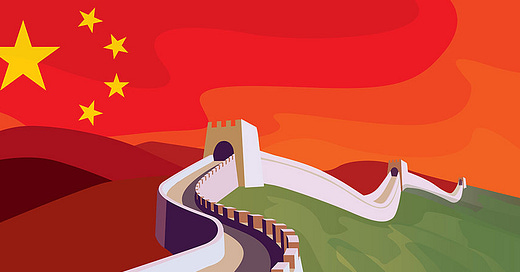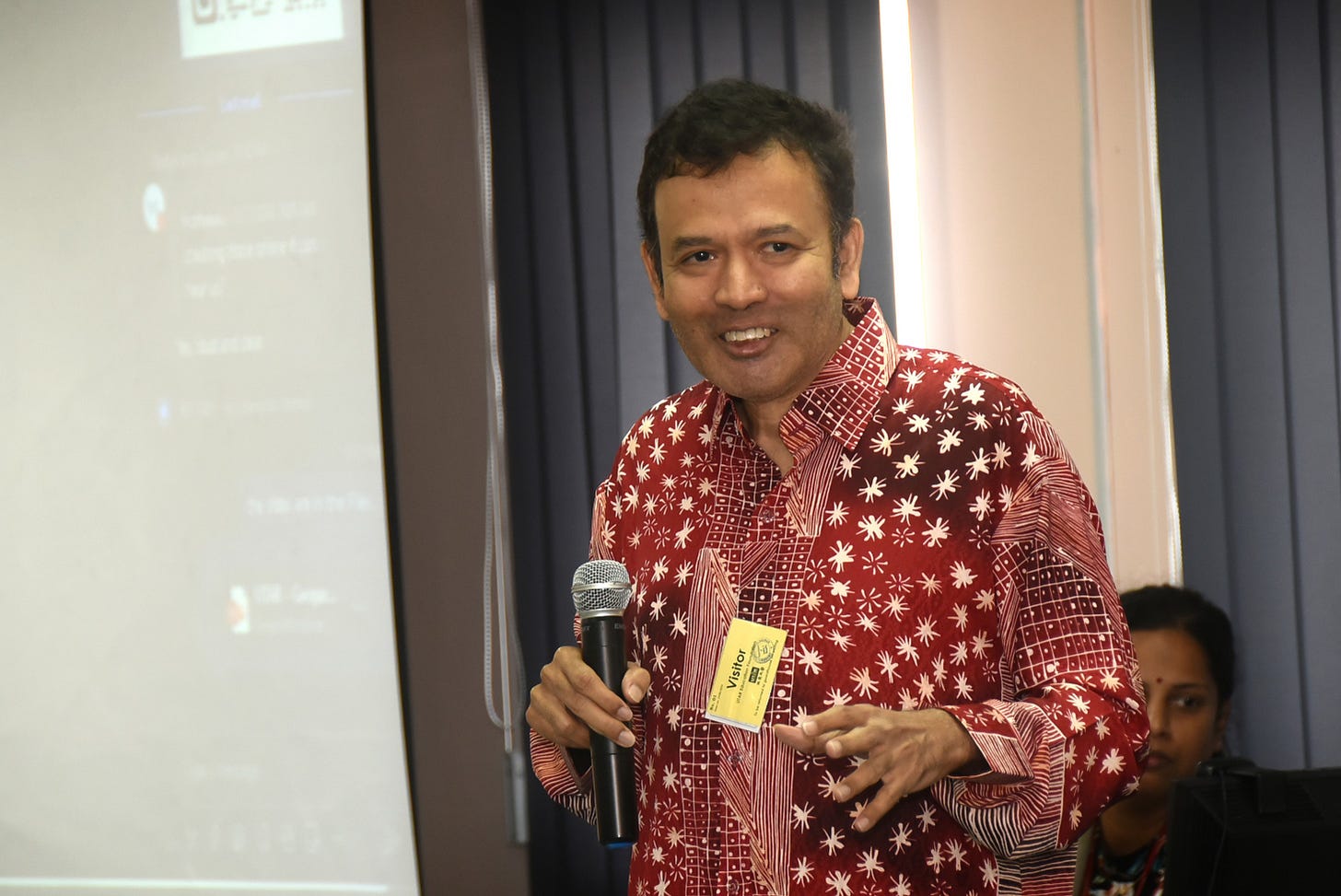Guest Editorial: The Future of Global Power - How the West Misread China’s Rise
By Samirul Ariff Othman
The West's great miscalculation in the late 20th century was assuming that a prosperous China would inevitably come to resemble a liberal, market-driven democracy like themselves. It’s easy to see why. When Bill Clinton championed China’s ascension to the World Trade Organization in 2001, the logic was straightforward: integrate China into the global economy, give it a stake in the rules-based international order, and watch as it morphs into a more Westernized, more democratic society.
After all, wealth and openness had softened the hard edges of authoritarianism in other countries, so why not China? But this was a profound underestimation of China's historical resolve and cultural resilience. China didn’t see WTO membership as an invitation to adopt Western values; it saw it as a means to fortify its own path to modernization —one that could grow more prosperous without diluting its centralized control or ideological foundations.
This oversight is rooted in the West's complex relationship with China, which swings from apprehension to ambition, and from hope to miscalculation. If you rewind the clock to the early 20th century, during the tail end of China’s last imperial dynasty and the tumultuous years of civil war, the Western world’s fear was of a China that was too poor, too fractured, too chaotic.
The PRC was born on October 1, 1949, from a nation divided and devastated, and the fear in Washington and London was that this impoverished, war-ravaged country would become a breeding ground for refugees, flowing outward in search of stability and opportunity. A weak, disorganized China, they thought, would be Asia’s wound that the world would have to bandage.
Fast forward to today’s multipolar reality, and the irony is stark. China didn’t flood the West with refugees —it flooded the world with manufactured goods, investments, and increasingly, its own ideas of governance and development. As a newly prosperous China rose, it did so on its own terms, embracing capitalism with Chinese characteristics and a political structure that could tighten, rather than loosen, state control.
Instead of seeking to emulate the West, China now sits at the center of an evolving multipolar world, one in which the U.S. is no longer the singular, unchallenged superpower. The West's mistake was not just in expecting China to change but in underestimating how this economic behemoth, with centuries of cultural pride and a vision of its own destiny, would reshape the very world order it was invited to join.
The opening of the People's Republic of China was a geopolitical masterstroke, a strategic pivot aimed at tilting the balance of the Cold War. When Nixon and Kissinger set their sights on Beijing in the 1970s, the goal wasn’t just diplomacy; it was chess, an effort to pry open the PRC —a communist giant —and use it to counterbalance the Soviet Union. In this delicate dance, a surprising partner emerged: Pakistan.
This South Asian Nation played a crucial role in facilitating Kissinger's secret trip to China in 1971, which ultimately opened the door for U.S.-China relations. At the time, relations between the United States and China were tense, and direct diplomatic channels were virtually non-existent. Pakistan, however, maintained good relations with both nations and acted as a discreet intermediary. President Nixon and his National Security Advisor Henry Kissinger recognized Pakistan's unique position and approached Pakistani President Yahya Khan to serve as a go-between.
In a carefully orchestrated plan, Kissinger traveled to Pakistan under the guise of a diplomatic visit. While there, he feigned an illness and, under cover, was quietly flown from Pakistan to Beijing. This covert trip laid the groundwork for the first formal contact between U.S. and Chinese leaders in over two decades and marked a pivotal shift in the Cold War dynamics, creating a counterbalance to Soviet influence.
Without Pakistan’s facilitation and trusted mediation, the historic U.S.-China rapprochement might have taken much longer to unfold —or may not have happened at all. And thus, “Ping Pong Diplomacy” began —a few paddles, a handshake, and suddenly the West had an unlikely, but valuable, friend in Mao’s China.
Historically, though, Western attitudes toward China have been laced with a fear of the “Yellow Peril”—the idea that Asia, and China in particular, would rise as an unstoppable force, a rival civilization with the power to reshape the world. Fast forward, and that perceived threat has morphed into the "Asian Century," an era where China is not just emerging but becoming a central player on the world stage. Voices like Kishore Mahbubani suggest that it’s time to recognize the tectonic shift in global power and prepare for a future where Asia, and especially China, leads. But here’s the rub: Asia itself isn’t fully sold on the idea of a Chinese-led world. Beijing’s ambitious rise has left a trail of apprehension across East Asia —South Korea, Taiwan, Japan, and many Southeast Asian nations like Vietnam and the Philippines all watch China’s ascent with a mix of respect and wariness.
Why? Because for them, China's rise isn’t just economic; it's political, cultural, and strategic. The South China Sea, where territorial claims rub uncomfortably close, is a potent reminder of China’s ambitions. Countries like Vietnam and the Philippines fear that what Beijing describes as a “peaceful rise” could also mean a more assertive, more dominant China. So, while the West might see China as an emerging superpower with the potential to reshape the world, East Asia sees it as both a partner and a potential hegemon —a source of opportunity but also a historical rival.
The question isn’t just whether the 21st century will be Asian, but what kind of Asia will emerge, and whether China’s neighbors will embrace—or resist—a future defined by Beijing’s terms.
Samirul Ariff Othman
Economist Samirul Ariff Othman is an adjunct lecturer at Universiti Teknologi Petronas, international relations analyst and a senior consultant with Global Asia Consulting. He has a background as a senior researcher at the Malaysian Institute of Economic Research.
Subscribe Below:





The fear of refugees flooding the world was real. It became a reality through stealth. Today all of South East Asia's economies are dominated by the Chinese. The vast majority of them including those in Malaysia and Singapore arrived illegally. As a community they later managed through their organizational skills and abilities to convince their host governments that they were entitled to citizenship of their hosts nd secured these through sleight of hand some say.
Malaysia's Tunku Abdul Rahman without parliamentary informed consent handed out 2,000,000 citizenships to the mainly Chinese settlers in Malaya after independence. Many more would arrive later through different means not always legal and settle in places like Malaysia and Singapore. The same in all of the 10 ASEAN states, Latin America (Brazil in particular), the USA, Canada and Europe. They intimidated their hosts through support of communist armed struggles in most if not all of the10 ASEAN countries they settled in. It gave them leverage against xenophobia and nationalist sentiments running high in these states after colonial rule cam to an end.
The Chinese kept their heads down in their Western host countries knowing full well they were not as a people trusted or welcome there. Thus began the Chinese rise to economic and political power worldwide. Networking or the Guang Xi. They presented a security risk in all of the states they settled in. It was both perceived and real.
When Kissinger and Nixon visited China his purpose and objective was as distorted, narrow and lacking depth as Western ideas of international relations were in the 18th and 19th centuries. "Whats in it for me" and "do as I say or I shoot".
The mistakes made by the West in their miscalculations with China arises from Western ideas of international relations and their inability to go beyond Western perceptions of non European states like China. All of this is driven by an education and culture that is very inward looking and inflexible and delivered through the prism of a gun. Force.
Kissingers and the US's powers were grossly exaggerated and viewed primarily through their ability to coerece and intimidate those who failed or refused to acknowledge their capacity to dominate through sheer brute force. The Chinese knew otherwise courtesy of the Vietnam experience.
And as they always do, the Chinese do not invade. Not in recent times at least. They wait and bide their time till the other sides acts first. The Chinese are calculating, strategic in their thinking and patient. It has always paid off. The Anglocentric Indians right next door to them keep playing to the West whilst the Chinese continue to be Chinese and work tirelesley towards their goals.
Therer is no esoteric language when dealing with the Chinese. It is black and white though expressed very subtley by them in their foreign relations and negotiations with others not wanting to offend.
Henry Kissinger was a well regarded fool. Little mention is made of great thinkers and statesment they encountered in their travels like Pham Van Dong, Ho Chi Minh, the great Zhou En Lai and Mao himself.
Kissingers memoirs that deals with his meetings with Chairman Mao admits to having had his tail pulled seveal times during their secret trysts. Mao in true Chinese fashion wanted to drive home the point that he was in charge.
As the West crumbles, they still refuse to engage in some useful introsepction of themselves in the mistaken belief that they once conquered and ruled much of the world through sheer genius. Even for that the Chinese had an integral part to play in their expansion. Gun powder.
Western politicians digging own graves with antiChina rhetorics.